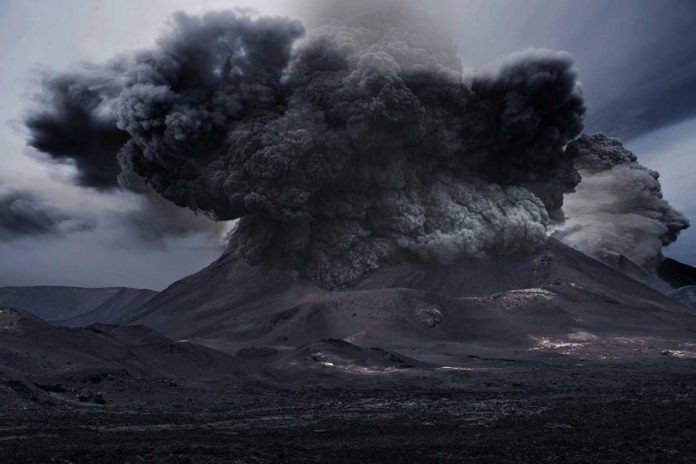In April 2020, the Eyjafjallajökull volcano in Iceland erupted and sent wandering ash plumes into the skies and disrupted air traffic across northern and central Europe for the next several days.
Up to that point, models from the nine Volcanic Ash Advisory Centers (VAACs) around the world, which pointed toward anticipating when the ash cloud interfered with airplane routes, depended on tracking the clouds in the atmosphere.
On account of this disaster, Europe has introduced ash concentration thresholds used by the airline industry when making decisions on flight restrictions.
However, a team of researchers, led by the University of Geneva (UNIGE), Switzerland, discovered that even the smallest volcanic ash did not behave as expected. This study will help refine how volcanic ash is represented in forecasting models used by the VAACs, which must react in real-time to provide useful advice during a volcanic eruption.
Eduardo Rossi, a researcher at the Department of Earth Sciences of the UNIGE Faculty of Sciences and the first author of the study, said, “During an explosive volcanic eruption, fragments ranging from a few microns to more than 2 meters are ejected from the volcanic vent. The larger the particles, the faster and closer the volcano they fall, reducing ash’s concentration in the atmosphere. This is why the new strategies have integrated concentration thresholds better defining the dangerousness for aircraft engines. From 2 milligrams per cubic meter, airlines must have an approved safety case to operate.”
Costanza Bonadonna, a professor in the Department of Earth Sciences at UNIGE, said, “Despite existing knowledge about the ash clouds, several open questions remained unanswered after the 2010 Eyjafjallajökull eruption, including the discovery of particles in the UK that were much larger than expected. We wanted to understand how this was possible by accurately analyzing the ash particles from the Sakurajima volcano in Japan, which has been erupting 2-3 times a day for more than 50 years.”
Scientists collected the ash before it hit the ground using an adhesive paper to observe how micrometric particles would group into clusters, which were destroyed after the impact with the ground.
Eduardo Rossi said, “It plays an important role in the sedimentation rate. Once assembled in aggregates, these micrometer particles fall much faster and closer to the volcano than the models predict because they are ultimately heavier than if they fell individually. This is called premature sedimentation.”
In Japan, the UNIGE team made a new important discovery: the observation of the rafting effect. Using a high-speed camera, the volcanologists observed the ash’s sedimentation in real-time and discovered previously unseen aggregates called cored clusters.
Costanza Bonadonna said, “These are formed by a large particle of 100-800 microns – the core – which is covered by many small particles less than 60 microns. And this external layer of small particles can act as a parachute over the core, delaying its sedimentation. This is the rafting effect.”
Eduardo Rossi said, “Working with Frances Beckett of the UK Met Office, we have carried out several simulations that have enabled us to answer the questions raised by the eruption of Eyjafjallajökull and the unexplained discovery of these oversized ash particles in the UK. It was the result of this rafting effect, which delayed the fall of these aggregates.”
Journal Reference:
- Rossi, E., Bagheri, G., Beckett, F. et al. The fate of volcanic ash: premature or delayed sedimentation?. Nat Commun 12, 1303 (2021). DOI: 10.1038/s41467-021-21568-8
